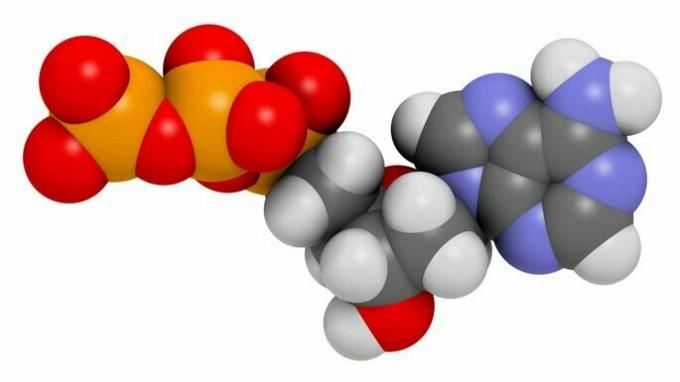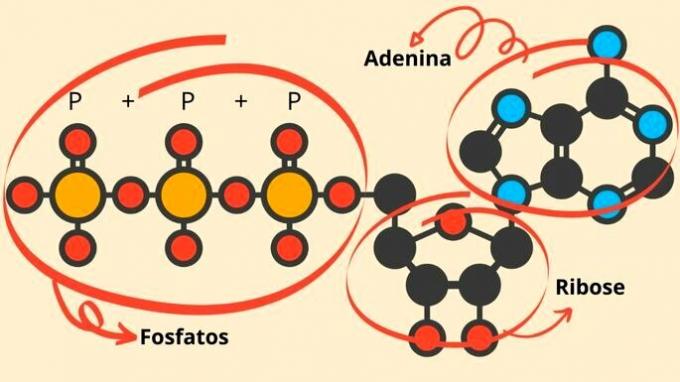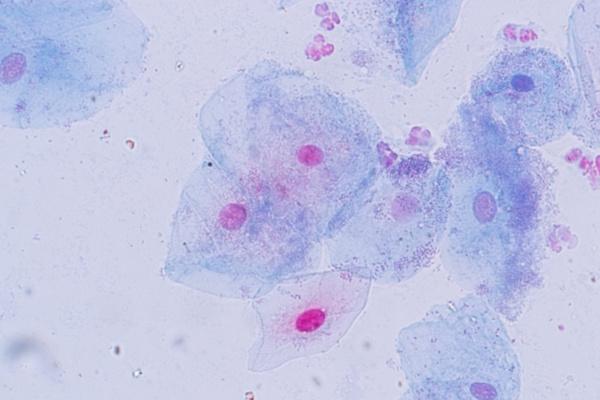ATP is a molecule with the function of store and release energy temporarily for the cells of an organism to carry out their activities.
It is better known in biology by the acronym ATP which means adenosine triphosphate or adenosine triphosphate. It is made up of a sugar called ribose, a nitrogenous base called adenine, and three phosphate radicals.
Glucose, used to produce ATP, is a sugar produced by plants that are autotrophs, that is, they produce their own source of energy.
This sugar with 6 carbon atoms undergoes chemical reactions inside the cells. In the cytoplasm the process is known as fermentation and in mitochondria as cellular respiration. At the end of both, new ATP molecules are formed.
ATP function and production
ATP's main function is to store and release energy where it needs it. For example, for a cell phone to work, it needs to charge its battery. With the battery charged, it is possible to use it, as the energy is supplied by it. The same happens with ATP, this molecule is similar to a mini battery.

Cells use fermentation or cellular respiration to form ATP. There are two types of fermentation, both produce only 2 molecules of ATP and usually occur in microorganisms (bacteria and fungi). However, fermentation also occurs in human cells, such as muscle cells (lactic fermentation).
Alcoholic fermentation: Glucose → ethyl alcohol + CO2 + 2 ATP;
Lactic fermentation: Glucose → lactic acid + 2 ATP.
Cellular respiration, on the other hand, produces a balance of 38 molecules of ATP and it needs oxygen to happen. However, in skeletal muscle and nervous tissue cells, the final balance is 36 molecules of ATP.
- Cellular Respiration: Glucose + O2 → CO2 + H2The + 38 or 36 ATP.
Some authors suggest that, in practice, the final ATP balance is not always 38, but can vary between 30 or 32 molecules.
When glucose is broken down, energy is released and stored forming ATP. A sequence of chemical reactions take place to extract this energy and they are:
- glycolysis;
- Krebs cycle;
- Oxidative Phosphorylation or Respiratory Chain.
| Phase | cell location | ATP molecules formed |
| glycolysis | Cytoplasm | 2 |
| Krebs cycle | mitochondrial matrix | 2 |
| respiratory chain | Mitochondrial Crest Membrane | 34 |
| Final balance | 38 |
Know more:Energy Metabolism
When activity needs to occur, the ATP molecule undergoes a hydrolysis (breakdown of the molecule in the presence of water). for being a reaction exergonic releases a high amount of energy, about 7 kcal/mol of one of the phosphates. After the loss of a phosphate, the molecule transforms into ADP or Adenosine Diphosphate.
- ATP hydrolysis reaction: ATP + H2O → ADP + Pi + free energy.

Chemical composition of ATP
The ATP molecule is composed of a nitrogenous base called adenine, a 5-carbon sugar called ribose and three radicals phosphate.
The chemical bond between adenine and ribose is called adenosine and the 3 phosphate groups form the triphosphate. For this reason the molecule is called adenosine triphosphate or adenosine triphosphate. And it is precisely in the phosphate bonds that free energies are stored.

The formation of ATP: ADP + Pi
It is common the existence of ADP and inorganic phosphate (Pi) in the cytoplasm of cells. When glucose hydrolysis occurs, an amount of energy is released and stored in the bond between ADP and Pi forming ATP.
See the reaction:
Therefore, ADP in binding to Pi forms an organic structure that contains 3 phosphates, hence, adenosine triphosphate. This is why ATP stores energy temporarily, because at all times it accumulates and releases it so that the cells perform their functions.
See too:
- Cellular respiration
- Fermentation
- mitochondria
- glycolysis
- Krebs cycle
- oxidative phosphorylation
- cellular metabolism
Bibliographic references
MACHADO, V. G.; NAME, F. Energy-rich phosphate compounds. New Chemistry, v. 22, no. 3, p. 351–357, 1999.
UZUNIAN, A.; BIRNER, E. Biology: single volume. 3rd ed. Sao Paulo: Harbra, 2008.

